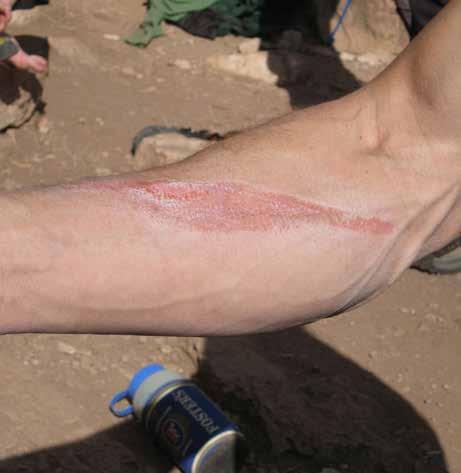
3 minute read
How to hydrate this summer FOR TRIATHLON TRAINING AND ALL OUTDOOR SPORTS
BY GEORDIE MCCONNELL
EXERCISING when you’re dehydrated is like trying to swim in mud. While the mud might be great for your complexion, it will frustrate your attempts at making forward progress.
Advertisement
Our blood acts like the fuel line for our body, keeping the machine working. Since water is the main component of blood, dehydration results in lower blood volume. With less blood available to carry nutrients to the working tissues, your heart has to work harder and harder to maintain performance, and your body struggles to control its core temperature. Sooner or later, it’s a losing battle. Why? Sweating out even two per cent of your body weight can really hurt performance. Scientific studies show that losing four per cent can cause a drop of 30 per cent in your performance level. As a very unscientific example, imagine you run a half marathon and expect to finish in two hours, but due to dehydration, you stagger across in 2:40.
Here’s the single most important tip to remember regarding hydration: don’t wait until you’re thirsty to drink. Thirst is a signal that you are already dehydrated. You want to avoid reaching this state, partly because it’s dangerous. What’s the key? Approach exercise sensibly. If you are paddling for two hours on a summer day or doing a hard spin class, your body will lose fluid through perspiration. You must drink to replace it.
And perspiration isn’t the only way to lose fluid; you’ll also lose water just by breathing. That’s right! Remember seeing clouds of condensation from breathing on a cold day last winter? Moisture leaves your body whenever you exhale, warm weather or cold.
Sip water regularly. That’s the first step to staying properly hydrated. When physical activity levels increase, so should your sipping frequency. By sipping, you keep a regular flow to the digestive tract from where the water is easily absorbed. If you gulp too much water at a time, it will slosh around in your stomach causing discomfort. In extreme situations, it might even overwhelm your body, causing shock.
Whether you sip water or a fluid replacement drink (FRD) in the early stages of exercise is up to you. Some individuals don’t mind the extra calories, and find the flavour helps to ensure they consume enough. There does come a point though where you do need more than water. Electrolytes such as sodium and potassium are lost through sweat, and too much loss can negatively affect several body functions. That’s why you should consider using an FRD when you know your exercise will go beyond one hour.
As spring ushers in warmer temperatures, make the most of your outdoors workout by hydrating properly. Remember to drink enough fluid for the duration of your outing, sip regularly, and don’t go swimming in mud.
HOW TO TREAT ROPE BURN
Nobody likes getting burned, and a rope burn can really, really hurt. Two quick tips to minimizing the damage are to keep the wound clean as tetanus bacteria may infect it, and to use clean water, antibiotic cream and a sterile gauze to protect it 5. afterwards. TREATMENT 1. ASSESS THE WOUND, if it’s larger than three TIPS inches (8cm) in diameter or deeper than your • upper layers of skin, it’s recommended to visit a hospital and clean and cover the injury in the interim; • 2. CLEAN THE ROPE BURN with water (not hydrogen peroxide) as rinsing the wound will • remove small particles of rope, bacteria and dirt; 3. VISIT YOUR PHARMACY for topical antibiotic cream or lotion and apply it to the surface area of • the rope burn. You may also use acetaminophen or ibuprofen to deal with pain and inflammation; COVER THE WOUND with a clean gauze bandage and be sure to allow circulation to help heal the burn. If you’re in the wild and don’t have the medical supplies handy use any clean clothing you have at the ready; KEEP THE WOUND CLEAN and dry as possible in the days ahead.

nothing beats a first-aid kit in your pack or automobile (creams, gauze, bandages, pain meds, etc.) keep clean water in a bottle for wounds and potential eye injuries avoid rope burns by wearing appropriate gloves, long sleeves and pants when you might be at risk of a rope burn never grab a rapidly moving rope










